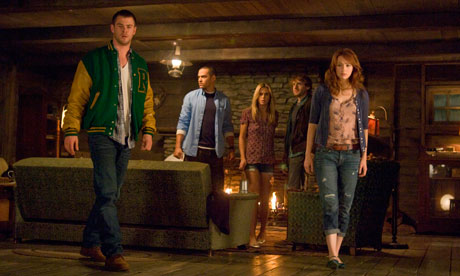[This is the first of two reviews for The House Next Door to mark my coverage of the 2012 New York Film Festival. The second will be a review of Robert Zemeckis' Flight on October 14.]
While at first the
idea of Bill Murray playing Franklin D. Roosevelt may seem counterintuitive to
the actor's sensibilities, on further thought the combination is quite rife
with possibility. Throughout his career, Murray has offered up intimate
portraits of individuals whose personal vices he spun into inspired bits of
comedy (the challenged greenskeeper of Caddyshack,
the insufferably self-obsessed Phil Connors in Groundhog Day, etc.), and every so often into devastating visions
of isolated, broken men (see Broken
Flowers and Lost in Translation).
In Hyde Park on Hudson, Murray is up
to the task of channeling our country's 32nd president despite a scarce
resemblance in appearance and voice. He succeeds in doing so by summoning the
otherworldly presence of his famous comedy roles as well as the understatement
of his more serious efforts, melding them into a compelling portrayal of a
larger-than-life yet mysterious figure such as Roosevelt.
Despite its virtuoso lead performance, Hyde Park on Hudson is nonetheless a tonal misfire and a
disappointment. The problems start with how the film is framed through the
perspective of one of Roosevelt's mistresses, a quiet woman named Daisy (Laura
Linney). Her modest upbringing makes Daisy both an unlikely and fitting
assistant to the president as he makes stay in the secluded surroundings of
rural New York. The story concerns Daisy's fascination with the president and
how it blossomed into an affair that the two carried on as his administration
plays host to the king and queen of England.




